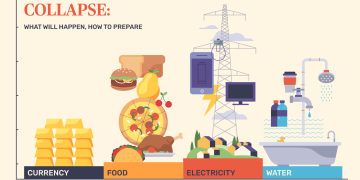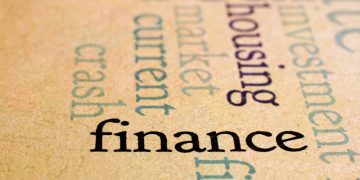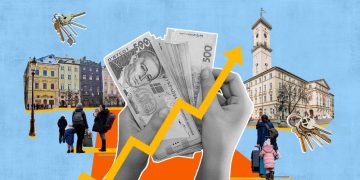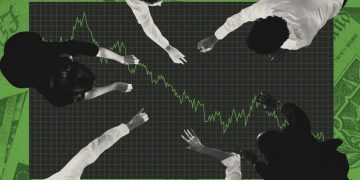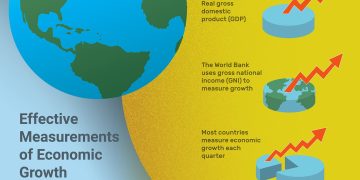The Federal Reserve (Fed) plays a pivotal role in shaping the U.S. economy, and its decisions regarding interest rates have a profound impact on both the stock market and the real estate market. Interest rate hikes are a tool used by the Fed to manage inflation, stabilize prices, and keep the economy from overheating. However, these decisions also come with consequences that ripple across various sectors, particularly those reliant on borrowing and investment, such as the stock and real estate markets.
In this article, we will explore how the Fed’s interest rate hike policy affects the U.S. stock market and the real estate market. By understanding the dynamics between monetary policy and market behavior, we can better grasp the potential implications for investors, homeowners, and the broader economy.
1. What Are Interest Rate Hikes and Why Does the Fed Use Them?
Interest rate hikes refer to the decision by the Federal Reserve to increase the federal funds rate, which is the interest rate at which banks lend to each other overnight. The primary goal of raising interest rates is to curb inflation and slow down an overheating economy. When the Fed raises rates, it increases the cost of borrowing for consumers and businesses. This is designed to reduce spending, investment, and demand, which can help control inflation and prevent the economy from growing too quickly.
The Fed typically raises interest rates when inflation is high, unemployment is low, and the economy is growing at a fast pace. By tightening monetary policy, the Fed aims to maintain a balance between economic growth and price stability. However, the impact of such rate hikes can be complex, and they can influence a wide range of economic sectors, particularly the stock market and real estate market.
2. Impact of Interest Rate Hikes on the U.S. Stock Market
The stock market is highly sensitive to changes in interest rates. When the Fed raises interest rates, it affects the cost of borrowing, which in turn influences corporate profits, investor sentiment, and overall market performance. Here’s a breakdown of how interest rate hikes impact the stock market:
2.1. Higher Borrowing Costs for Companies
As interest rates rise, borrowing costs for businesses increase. Companies that rely on debt to finance their operations, expansion plans, or capital investments may face higher interest payments. This can reduce their profit margins, particularly for those in capital-intensive industries such as real estate, utilities, and manufacturing. In turn, lower profits can lead to lower stock prices as investors reassess the potential returns on investing in these companies.
2.2. Reduced Consumer Spending
When interest rates increase, consumers face higher borrowing costs for things like credit card debt, personal loans, and auto loans. Additionally, higher mortgage rates can make housing less affordable, reducing consumer confidence and spending power. As consumer demand weakens, companies may experience lower sales, which can negatively affect their stock prices. This is particularly true for consumer discretionary sectors like retail and entertainment, where demand is highly sensitive to economic conditions.
2.3. Shift in Investor Sentiment
Investors typically adjust their portfolios based on changes in interest rates. Higher interest rates can make bonds and other fixed-income investments more attractive compared to stocks, as they offer higher yields and less risk. This could lead to a rotation out of equities and into safer assets like government bonds. As a result, stocks—especially those with higher growth potential—may experience downward pressure as investors seek safer returns.
Furthermore, when the Fed raises rates, it often signals a tightening of monetary policy aimed at controlling inflation. This can create uncertainty in the market, leading to increased volatility as investors adjust to the new economic environment.
2.4. Sector-Specific Impacts
The impact of rate hikes is not uniform across all sectors of the stock market. Some sectors are more sensitive to interest rate changes than others:
- Financials: Banks and other financial institutions may benefit from higher interest rates, as they can charge higher rates on loans and mortgages, leading to higher profit margins.
- Tech Stocks: High-growth technology companies, which rely on cheap capital for expansion, are particularly sensitive to rising interest rates. As borrowing costs increase, the future cash flows of these companies are worth less in today’s terms, leading to a decline in stock prices.
- Consumer Discretionary: Companies in consumer discretionary sectors, such as retail and travel, may struggle as higher interest rates reduce consumer spending on non-essential goods and services.
- Utilities: Utilities, which typically carry large amounts of debt, may see their stock prices decline as higher interest rates raise the cost of servicing that debt.
2.5. Market Volatility and Timing
The immediate reaction of the stock market to an interest rate hike can vary depending on how investors perceive the Fed’s actions. If the rate hike is seen as a necessary step to control inflation and maintain economic stability, markets may initially experience a short-term sell-off followed by a recovery. However, if investors believe that the rate hike will stifle economic growth or push the economy into a recession, stock prices could experience prolonged downward pressure.

3. Impact of Interest Rate Hikes on the U.S. Real Estate Market
The real estate market is another area that is highly sensitive to changes in interest rates. Since real estate transactions are often financed through mortgages, rising interest rates can have a significant impact on housing affordability and demand. Here’s how interest rate hikes affect the real estate market:
3.1. Higher Mortgage Rates
The most direct impact of a Fed interest rate hike on the real estate market is the increase in mortgage rates. When the Fed raises rates, lenders typically pass on the higher borrowing costs to consumers in the form of higher interest rates on mortgages. For prospective homebuyers, this means higher monthly payments, which can reduce affordability and make it more difficult for buyers to enter the market.
For example, if a 30-year fixed mortgage rate increases from 3% to 5%, a buyer borrowing $300,000 could see their monthly payment rise by several hundred dollars, which could be a significant deterrent for many buyers.
3.2. Reduced Housing Demand
As mortgage rates rise, demand for housing tends to fall. Higher borrowing costs make it more difficult for potential buyers to afford a home, leading to a slowdown in sales activity. First-time homebuyers, in particular, may be priced out of the market, leading to lower home sales volumes.
Additionally, higher mortgage rates can reduce the demand for refinancing. Homeowners who are considering refinancing their mortgages may hold off on doing so if rates are higher than they were when they first purchased their home. This could lead to a decrease in homeownership turnover and a reduction in market liquidity.
3.3. Impact on Home Prices
While higher mortgage rates can reduce housing demand, the relationship between interest rates and home prices is complex. In some cases, rising rates can lead to a slowdown in home price growth or even a decline in home prices, particularly in overheated markets where home values have increased rapidly in recent years. As fewer buyers are able to afford homes, sellers may be forced to lower their asking prices to attract buyers.
However, in markets where housing supply is constrained and demand remains strong, home prices may be more resistant to rate hikes. In these markets, the inventory of homes may remain low, and sellers may not be as willing to reduce their prices, leading to more moderate price growth rather than outright declines.
3.4. Investor Behavior in the Real Estate Market
Real estate investors who rely on financing to acquire properties may also be impacted by higher interest rates. As borrowing costs rise, the potential return on investment (ROI) for real estate transactions decreases, which could make investment properties less attractive. This could lead to a slowdown in real estate transactions in both the residential and commercial sectors.
However, some investors may seek opportunities in real estate despite higher borrowing costs, particularly if they expect long-term price appreciation or if they can obtain financing through alternative means (e.g., fixed-rate loans or private equity).
4. Conclusion: Navigating the Effects of Interest Rate Hikes
The Federal Reserve’s interest rate hike policy plays a critical role in shaping both the stock market and the real estate market. For the stock market, rate hikes can lead to higher borrowing costs, reduced consumer spending, and shifts in investor sentiment, which may create volatility and pressure stock prices downward. For the real estate market, rising mortgage rates can reduce affordability, slow demand, and potentially lead to a cooling of home prices, particularly in more expensive or overheated markets.
While the short-term effects of interest rate hikes can be challenging for investors and homeowners, the Fed’s actions are ultimately aimed at ensuring long-term economic stability. Understanding the relationship between interest rates, market dynamics, and economic conditions is crucial for making informed decisions in both the stock and real estate markets. As the Fed continues to adjust its policy in response to inflation and economic growth, market participants must stay vigilant and adapt to changing conditions.




